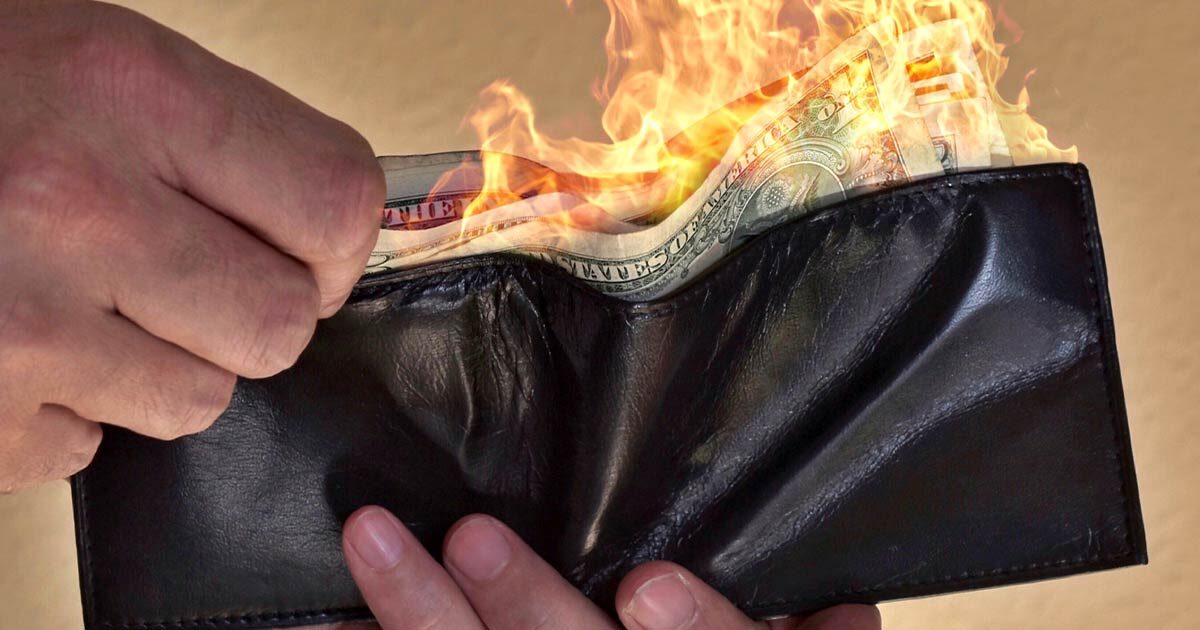
In the latest attack on the American family’s book, the Biden administration has announced a new $6.8 Trillion Budget that will significantly raise what you are paying in taxes to fund a slew of government welfare and social programs.
The budget contains some $5 trillion in proposed tax increases, including punishing self-employed and small business owners with a significant rise in their yearly taxes.
Biden’s tax plan would raise
- capital gains tax from 20% to 39.6%, the highest since 1978
- the top tax rate from 37% to 39.6%
- the corporate tax rate from 21% to 28% 4
- Self-employment tax from 3.8% to 5.0%
It would also:
- Increase IRS funding by 15% on top of $80 billion from the Inflation Reduction Act
- Instate a 25% minimum tax rate on households with a $100 million+ net worth
- Eliminate tax break for crypto investors
- Eliminate carried-interest tax break
- Increase stock buyback tax from 1% to 4%
The budget would add another $17 trillion in deficits over the next ten years and a $5.5 trillion tax increase over the next ten years. This would push the total U.S. debt (not including over $120 trillion in unfunded liabilities) to over $50 trillion within ten years.
The news comes as the economy seems to be heading right off the cliff.
Stock and crypto markets erased a combined $1.5 trillion in value in under 2 hours today, while bank stocks posted their worst day since June 2020, losing over $50 billion in value.
Today, the four Biggest Banks lost $47 Billion in Market Cap as news that after more than seven decades of full-year increases, U.S. bank deposits across the industry fell for the first time since 1948.
- JPMorgan lost about $20 billion in market value Thursday.
- Bank of America lost roughly $15 billion.
- Wells Fargo‘s market capitalization was down $8.5 billion.
- Citigroup was down $3 billion.
Other Economic numbers we should be paying attention to:
- Mortgage demand has fallen to a 30-year low as interest rates push above 7%.
- The housing market has declined for six consecutive months for the first time since 2011. This comes as first-time homebuyers are experiencing the most unaffordable market in history.
- Used car prices are up 4.3% in February, the largest gain since 2009. This comes as the average used car loan rates is at a record 14%, and lenders report the most past-due car payments since 2009.
As we have been reporting, there is significant concern growing that we are heading towards an economic cliff.
- Food Shortages: American Food Supply in Real Danger, expected to get worse in 2023
- US inflation surges as economy becomes top preparedness threat
- U.S. money supply, which measures safe assets households and businesses can use to make payments, has fallen abruptly since March and is negative on a yearly basis for the first time since 2006.
- Mortgage payments as a share of income have doubled from 13% to 26%, and the savings rate has plummeted to almost zero.
- Total household debt increased by 8.5% in 2022 and now stands at a record $16.9 trillion. That’s $2.75 trillion higher than it was pre-pandemic.
- Sales of commercial mortgage bonds have taken a nose dive, plummeting about 85% year-over-year as commercial real estate investors are bracing for what looks like a wave of defaults throughout the commercial real estate industry.
You must start to take a balanced approach to being financially prepared for the future. While investing in your financial future is important, the same can be said for investing in your ability to survive future disasters. If you haven’t started preparing for economic troubles, now is the time to seriously consider stocking up to survive future financial problems.
Investing in long-term consumable goods.

This means stocking up on items you will need and use in the future or stocking items you can barter with in case the system fails. By stocking up on food, water, survival gear & supplies, and bartering goods, you will have a nice stockpile of supplies that will help you through almost any disaster.
Another upside to investing in consumable goods is these goods are completely secure from financial market volatility and will continue to hold their value after the collapse. In fact, as we’ve seen over the last year, most consumables will probably skyrocket in value in a post-collapse world.
Be Prepared to Feed Yourself when the Collapse Hits!
- Best Emergency Food: The Top Survival Food Supplies
- Survival Food – 56 Long-Term Survival Foods and Supplies at the Grocery Store
- Prepper 101: Your Survival Guide to Getting Started
Grocery Options that ship right to your Home:
Be Prepared to Defend Yourself
- Situational Awareness: How to Protect Yourself by Developing your Situational Awareness
- 7 Rules of Self Defense
- Self Defense: Defending yourself from multiple attackers
- Improvised Weapons: Self-defense in the Real World
- The Ultimate Situational Survival Guide: Self-Reliance Strategies for a Dangerous World
Learn to Be Self-sufficient NOW!

To truly be prepared, you need to learn how to be 100% self-sufficient.
- 30+ Self-Reliant Resources: Preparedness Skills that Everyone Should Know
- Urban Resources: Finding Food & Water During a Long-term Disaster
- Survival Fishing: Top Tips for Finding Fish during a Long-term Survival Situation
- Off Grid Living: A Real-world Guide to Going Off the Grid
- Homeschool: Taking your Child’s Education Off The Grid!



Be the first to comment